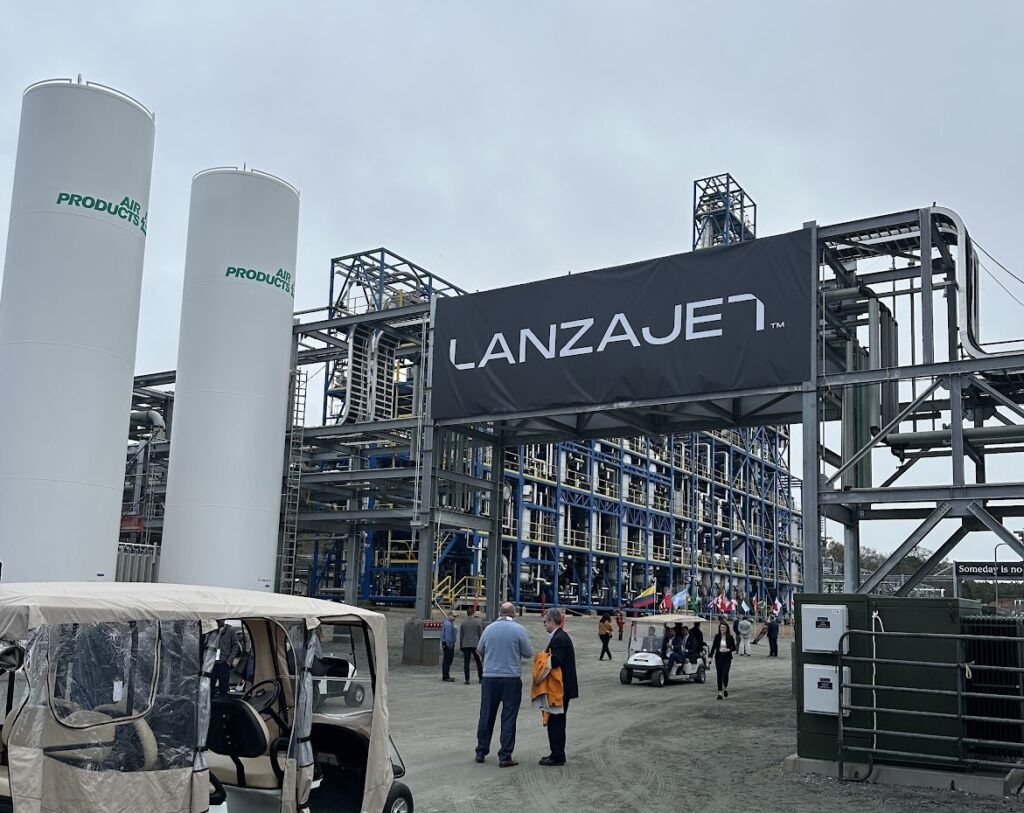
A trip to Soperton, Georgia for the grand opening of the world’s first sustainable aviation fuel plant.
Sustainable Aviation Fuel took a big step forward at the grand opening of LanzaJet’s ethanol-to-jet (ETJ) plant in Soperton, Georgia. LanzaJet’s ETJ technology will open up a wide variety of feedstocks for SAF and leverage existing ethanol production to scale SAF supply.

Today, most SAF is produced from waste oils, fats and grease using a process called Hydrotreated Esters and Fatty Acids (HEFA). With not nearly enough waste oils, fats and grease to make the SAF the world needs to meet its GHG reduction targets, researchers found a way to convert ethanol to jet fuel (ETJ). With billions of gallons of ethanol currently being produced each year, ETJ would provide a path to scaling SAF supply.
Leading the effort on ETJ is LanzaJet, whose parent company LanzaTech has been refining the technology for a decade. With support from major players like Suncor, British Airways, Shell and Bill Gate’s Breakthrough Energy, LanzaJet started construction on the world’s first commercial scale ETJ SAF plant in Soperton, Georgia. Coming online later this year, the plant will produce 10 million gallons of sustainable aviation fuel a year.
Scaling SAF production with ETJ will require a large volumes of low carbon ethanol. With carbon sequestration and sustainable agricultural practices, corn ethanol producers will be able to lower their carbon intensity (CI) to make corn ethanol suitable for SAF production. While these initiatives come online, waste based ethanol producers like DD Biofuel is ready to supply ETJ SAF production today.


